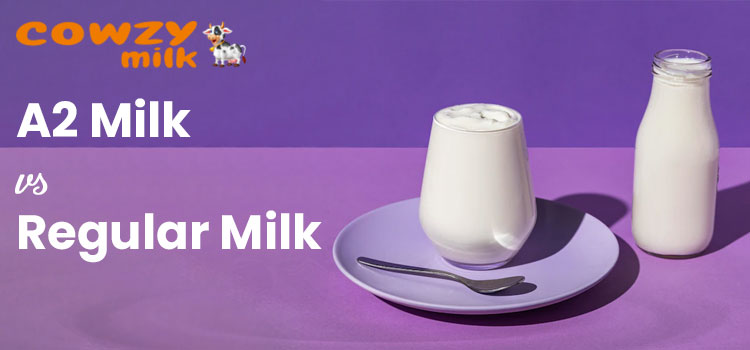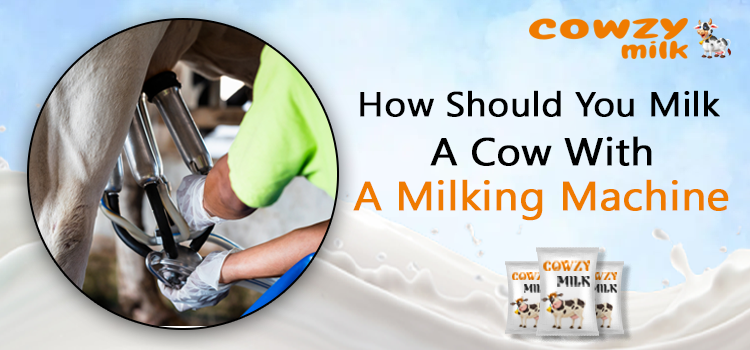Gone are the days when a family used to own cows for their dairy requirements. They milked cows in the morning; the children would have a glass of Milk and fresh curd and butter made at home. Nowadays, Milk is commercially processed for various fat and calorie content, closely adhering to government guidelines.
Milk is a staple diet worldwide; it undergoes several processes before reaching our tables. These processes ensure safety and quality and offer unique variations like A2 milk.
In this blog, we will dive deep into milk processing, pasteurization methods, and the distinctive features of A2 milk. We will also see if A2 milk is the same as pasteurized Milk. We will also learn about Cow Milk Cost in Ludhiana.
Buying Milk for your family has become the easiest now. You don’t need to purchase Milk physically; milk delivery services provide convenience by bringing fresh dairy products directly to your doorstep. You can find Cow Milk delivery in Ludhiana. This traditional yet modern approach ensures a regular supply of Milk, eliminating the need for frequent trips to the store while preserving the freshness and quality of the product.
MILK PROCESSING
Milk processing begins at the farm, where they milk the cows and collect the raw Milk. This raw Milk contains essential nutrients like protein, vitamins, and minerals but also carries the risk of bacterial contamination. To ensure safety, raw Milk undergoes several processing steps:
Step-by-step Milk processing
Rearing- The cows are provided with superior farm care by the dairy farmers. The cows eat high-quality feed and get timely medical care to ensure their health and well-being.
Milking- The dairy farmer milks farm animals using modern dairy machinery. Using dairy machinery increases efficiency and reduces the burden on the dairy farmer.
Clarification- Raw Milk is initially clarified to remove impurities and foreign particles, ensuring the Milk’s cleanliness and visual appeal.
Pasteurization- Pasteurisation is a crucial step in milk processing, involving heating the Milk to specific temperatures to kill harmful bacteria while preserving its nutritional value. Different pasteurization methods are employed, the most common being high-temperature, short-time (HTST) pasteurization, and ultra-high-temperature(UTH) Pasteurisation.
Homogenization- Homogenization breaks down fat molecules in Milk to prevent cream separation. This process creates a consistent texture and mouthfeel in the final product.
Standardization- Milk fat content can be adjusted by standardization, ensuring consistent fat percentages across various milk types such as whole, reduced-fat, and skim milk. The milk labs adhere to different standards set by the government and standardize Milk following the rules.
Packaging- Then they packed the processed Milk into various containers, from bottles, cartons to pouches, before distribution to customers.
PASTEURISATION OF MILK
Pasteurization is a critical step in ensuring milk safety. It involves heating raw Milk to specific temperatures for a particular period to eliminate pathogenic bacteria while maintaining its nutritional integrity. Two standard pasteurization methods are used:
High-Temperature, Short-Time (HTST) Pasteurisation
This method heats the Milk to around 161 degrees Fahrenheit (71.7 degrees Celsius) for 15 to 20 seconds, effectively killing bacteria without affecting the Milk’s taste and nutrient content.
Ultra-High-temperature (UHT) Pasteurisation
This method heats the Milk to temperatures as high as 280 degrees (138 degrees Celsius). The Milk is then rapidly cooled and stored in a sterile container. It allows the Milk to remain fresh at room temperature for longer.
A2 Milk
A2 Milk is a type of cow’s Milk that contains only the A2 beta-casein protein, unlike raw Milk, which has both A1 and A2 proteins. This type of Milk is easier to digest for some individuals who experience discomfort from A1 protein. A2 milk has gained popularity for its potential to provide a more tolerable dairy option.
The production process involves selectively breeding cows to produce A2 protein-rich milk, which then undergoes standard processing before distribution to the customers.
Is your Milk Pasteurised?
In many places, We need to pasteurize the Milk before selling it. Pasteurized Milk is usually labeled as pasteurized. The exception to this rule is cheese Oliver then 60 days.
Milk bought directly from dairy farmers might not be labeled; feel free to ask if they have pasteurized it.
Consuming raw unpasteurized Milk causes 96% of foodborne illnesses from Milk.
CONCLUSION
Milk processing involves steps to ensure the final products’ safety, quality, and nutritional value. Pasteurization is critical in killing harmful bacteria while retaining Milk’s inherent goodness. You can browse Cowzy Milk If you want to buy good quality milk.





